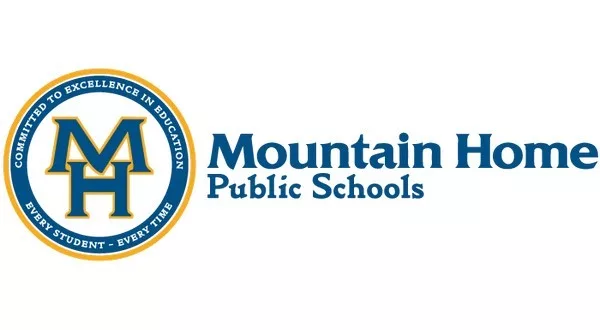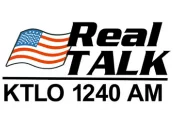
Thursday night, the Mountain Home Public Schools (MHPS) Board of Education held a special meeting and training session to discuss the facilities master plan.
Aliza Jones, a member of the Arkansas Association of School Facilities Planners who works closely with MHPS, was on-site to discuss the master plan, which requires a community meeting for the public to ask questions and share comments. She presented to the Board what the facility master plan dashboard looks like, walked through how funding is distributed, and discussed getting the high school in compliance with the state.
MASTER PLAN: https://docs.google.com/document/d/1ZitwAvzWAL1EqyKxnoutBm2M-kF6VLIJIrgYU6agRG8/edit
BACKGROUND
Jones started her presentation by giving a background on how the facilities master plan originated. She stated in the late 1990s, there was a lawsuit between the Lake View School District and the State of Arkansas under Governor Mike Huckabee. The lawsuit’s premise was the inadequacy of educational funding for facilities around the state. The Supreme Court ruled in favor of the Lake View School District and set eight mandates to be implemented immediately. One mandate was school districts had to submit every six years an updated facilities master plan. The plan has 15 components that deal with demographics, enrollment, condition assessment, maintenance, custodial, prevention, and short- and long-term projects.
The master plan, which was created in 2005, is a living document that is updated every year. The year that coincides with a partnership application, which occurs on even years, is when a community meeting is held, and a resolution is adopted by the School Board. The odd year is when simple updates are completed. Updates include making sure the buildings have the same usage as they did previously, the correct Principals are listed and if there were any projects completed.
Going into 2024, Jones states the district is applying for two partnerships for funding one to replace the roof at Guy Berry, and the second to replace the roof on the vocational building on the high school campus. Jones states they will know if the projects have been approved in the Fall of 2024 and will not know if they are funded until May 1, 2025.
Since the facilities master plan is a living document, Jones stated that just because a project is listed on the master plan, it doesn’t mean it must be completed.
Currently, the district has four committed projects in the master plan, including parking at the baseball complex, installation of fire detection at the high school, restroom renovation at the junior high, and the creation of ADA/Special Needs playgrounds at each campus.
Projects planned include perimeter and interior fencing at Bomber Stadium, tennis courts for the high school, installation of a new HVAC system at the junior high gym and PE facility, roof replacement at the junior high Agri building, new roof at Guy Berry, Bomber Stadium renovations and a new high school building.
HIGH SCHOOL FACILITIES
The first items added to the master plan for the high school were the recommendations by Mountain Home Fire Marshal Shawn Lofton, which included additional smoke detection and increased ventilation and smoke control.
SEPTEMBER TRANSITIONAL PLAN OF ACTION https://docs.google.com/document/d/12qCxFaUJ0ZAgLvGC_bSJTeKmocR-hoG-LXLs0MbdmyM/edit
Jones stated the state did not come to the district saying the high school had to come down, but rather, the district went to the state and said they would like to replace the school. She said when a district puts in a partnership project with the state to demolish a building, the state comes in with its team and reviews the FCI condition of the building.
In the 2022 application, the state completed an FCI of everything under the pre-engineered metal building (PMB), the cafeteria, library and fine arts building. It concluded the cafeteria, library and fine arts area were okay. However, once they realized the PMB structure could not be taken down without damaging the cafeteria, it was determined it would be included in the square footage needing to be renovated. They also completed a code evaluation including fire and ADA compliance; a structural engineer assessed the PMB structure through local and state fire marshal assessment.
When discussing replacement vs repairing of a building, Jones states the age of a building is not a defining factor. She noted the state reviews a warm, safe and dry list to assess district needs as a reference when looking at repair versus replacement. The warm, safe, and dry list is a set of components for a building, such as a roof, electricity, heating, and cooling, along with what it would cost to build a replacement – which is based on two factors the age of a building and the condition assessment. If the facility condition index (FCI) threshold is 65% for more for renovation versus a new build, the state would recommend building a new facility.
Jones stated the state has a construction cap of $289 per square foot for new construction, but current costs are anywhere from $320 to $400 per square foot. She said the legislative body only gives out $70 million per year, and last year, 18 district projects were funded out of 120 applications. The amount a district qualifies for is based on the median household income for each district. For Mountain Home, with a median income of $43,799, the state would pay 44 cents on the dollar per square foot. Board Member Scott Booth clarified with Jones that it is not 44% of the project costs but 44 cents on the dollar to the $289 per square foot price for approved space.
COMMENTS FROM THE PUBLIC
One comment received from the public was concern for the safety of students and teachers in the building.
In response, Jones shared a statement from Fire Marshal Lofton from July 19, saying, “The big top is a firefighter’s worst nightmare. The issues must be addressed as soon as possible to reduce the likelihood of a catastrophic event and a major loss to the community.” On August 23, the state fire marshal stated the structure could not support the added weight of a sprinkler system. She continued by saying if a fire marshal doesn’t want to send in his staff, saying no present danger is not an accurate statement.
Jones said she emailed the state fire marshal and copied Fire Marshal Lofton, asking if the recommendations he has made to the district make the building structure safe and compliant. She also asked how the likelihood of a catastrophic event cannot be relevant to student safety, what the district needs to do to maintain the high school and not demolish the PMB, and if they could show documentation the structure could not support a sprinkler system. As of the meeting on Thursday, Jones has yet to have a reply.
Jones said if the recommendations Fire Marshal Lofton’s presented would make the building safe and compliant, the district would not have to do anything further. If not, the Board will have to re-evaluate the plan. Jones states if the building is renovated 10%, the entire building will have to be brought up to code, which would include a sprinkler system the PMB could not support so they would be back at the beginning.
Jones stated the only one who can put a lock on the doors is the state fire marshal. But recommendations can be made to the Commission of Public School Academic Facilities, which three chairs would vote on.
BOARD TRAINING SESSION
During the training session, Jones presented in more detail as to what the facilities master plan is and how the state uses the data to make sure schools are equitable in Arkansas.
Based on the square footage of the suitable square footage of the high school, the state would allow partnership funding for 30,000, even though the square footage under the PMB is closer to 85,000.
Jones says that by rethinking how some of the space is utilized within the high school if any rebuilding is needed, it will be more cost-effective for the district.
Arkansas code states a district is not allowed to bid on architecture structure managers, and they must be hired based on qualifications. Bids can be accepted for general contractors.
Booth asked Jones if there was any feedback on why Mountain Home was not funded last spring. Jones stated the first mistake was going for a millage without knowing if the district would be funded. The second millage had fallen just below the funding line, and if it had passed, the district could have been bumped up and awarded funding.
The Board did not vote on the resolution to approve the partnership program application and has tabled it until the December meeting. It was decided they would like to wait to hear formally from the state fire marshal on whether the recommendations from Fire Marshal Lofton would deem the building safe.
A link to the master plan, public meeting, and training session can be viewed with this story at ktlo.com
Public Meeting recording: https://www.youtube.com/watch?v=Bw2k_kAmVCE
Board Training session recording: https://www.youtube.com/watch?v=4Hcn85OPjyc
WebReadyTM Powered by WireReady® NSI










